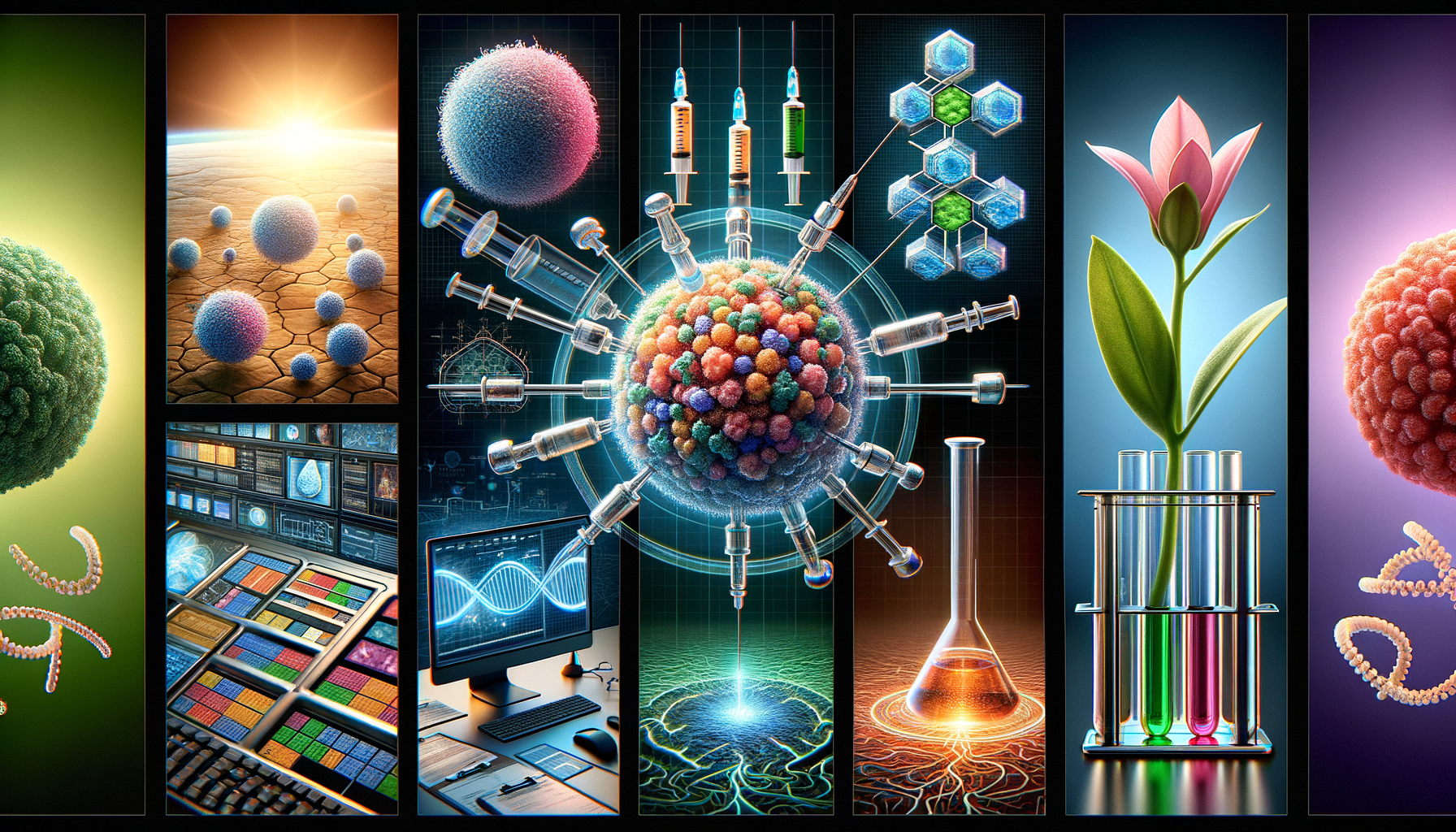5 things to understand about cancer vaccine development
The idea of cancer vaccines continues to evolve, with different approaches being explored around how they may work. Here are five basic things to help make sense of what’s being discussed.

Understanding the Basics of Cancer Vaccines
The concept of cancer vaccines is a fascinating and evolving field in medical science. Unlike traditional vaccines, which are designed to prevent diseases caused by viruses or bacteria, cancer vaccines aim to treat or even prevent cancer by stimulating the body’s immune system to target and destroy cancer cells. This approach is rooted in the understanding that cancer cells can often evade the immune system, and vaccines could potentially help in recognizing and attacking these cells.
There are two main types of cancer vaccines: prophylactic and therapeutic. Prophylactic vaccines are designed to prevent cancer from developing in healthy people, while therapeutic vaccines are intended to treat existing cancers by strengthening the body’s natural defenses against the disease. The development of these vaccines involves identifying antigens, which are specific proteins found on cancer cells that can trigger an immune response.
Research is ongoing to identify the most effective antigens and delivery methods for these vaccines. The potential of cancer vaccines lies in their ability to provide a targeted approach to cancer treatment, with the goal of reducing side effects and improving patient outcomes.
The Science Behind Cancer Vaccine Development
Developing a cancer vaccine involves a complex interplay of immunology, oncology, and biotechnology. Scientists begin by identifying tumor-specific antigens that are present on cancer cells but not on normal cells. These antigens are crucial because they serve as the target for the immune system to recognize and attack the cancer cells.
Once the antigens are identified, researchers work on formulating a vaccine that can effectively deliver these antigens to the immune system. This can involve different types of vaccine platforms, including peptide-based, DNA-based, and viral vector-based vaccines, each with its own advantages and challenges.
Clinical trials are a critical phase in cancer vaccine development. They help determine the safety, efficacy, and optimal dosage of the vaccine. Through these trials, researchers gather data on how well the vaccine works in boosting the immune response and reducing cancer progression. The path from laboratory research to clinical application is long and requires rigorous testing to ensure that the vaccine is both safe and effective for patients.
Challenges in Cancer Vaccine Development
Despite the promise of cancer vaccines, several challenges need to be addressed to make them a viable option for cancer treatment. One significant hurdle is the heterogeneity of cancer cells. Unlike infectious diseases caused by a single pathogen, cancer can vary greatly from one patient to another, even within the same type of cancer. This variability makes it difficult to develop a one-size-fits-all vaccine.
Another challenge is the immune system’s tolerance to cancer cells. Cancer cells often develop mechanisms to evade immune detection, making it difficult for vaccines to elicit a strong enough immune response. Additionally, the immunosuppressive environment created by tumors can further dampen the effectiveness of vaccines.
To overcome these challenges, researchers are exploring combination therapies that include cancer vaccines along with other treatments such as checkpoint inhibitors, which can help enhance the immune response. Personalized medicine approaches, where vaccines are tailored to the specific antigens present in an individual’s tumor, are also being investigated to improve efficacy.
Current Progress and Future Directions
The field of cancer vaccine development is rapidly progressing, with several promising candidates in various stages of clinical trials. For instance, vaccines targeting human papillomavirus (HPV) have shown success in preventing cervical cancer, highlighting the potential of prophylactic cancer vaccines.
Therapeutic cancer vaccines are also making strides, with some showing encouraging results in treating cancers such as melanoma and prostate cancer. These vaccines are often used in conjunction with other therapies to enhance their effectiveness and provide a more comprehensive approach to treatment.
Looking to the future, advancements in genomics and bioinformatics are expected to play a pivotal role in cancer vaccine development. These technologies can help identify new antigens and improve the design of vaccines, making them more effective and personalized. The integration of artificial intelligence in analyzing patient data and predicting responses to vaccines could further accelerate progress in this field.
Conclusion: The Promise of Cancer Vaccines
Cancer vaccine development represents a promising frontier in the fight against cancer. While challenges remain, the potential benefits of these vaccines in providing targeted, less toxic treatments are significant. As research continues, the hope is that cancer vaccines will become an integral part of cancer therapy, offering new hope to patients around the world.
For patients and their families, staying informed about the latest developments in cancer vaccine research is crucial. As new vaccines are developed and approved, they may offer additional options for treatment and prevention, contributing to improved outcomes and quality of life for those affected by cancer.
In summary, the journey of cancer vaccine development is one of innovation and perseverance. It reflects the broader quest to harness the power of the immune system to combat one of humanity’s most challenging diseases, paving the way for a future where cancer can be effectively managed or even eradicated.